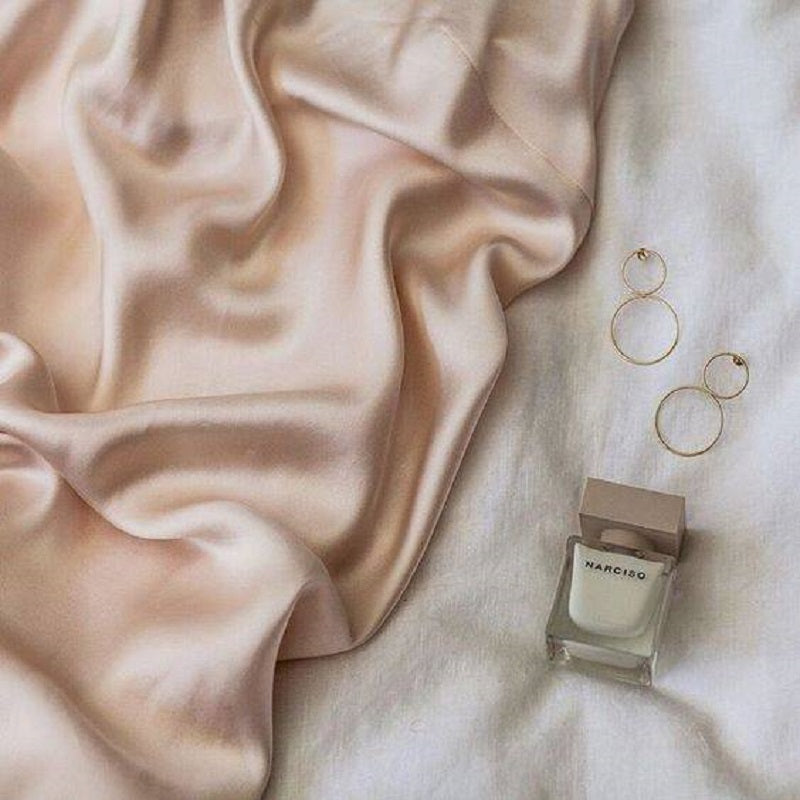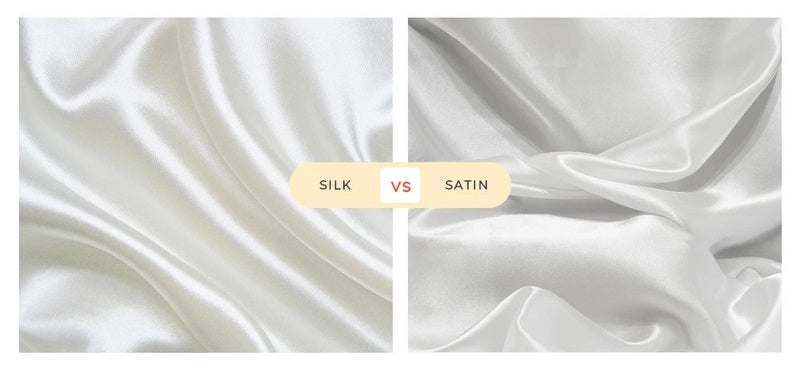Before Buy Silk, You Must Know That
What Is Mulberry Silk
Mulberry silk refers to the silk made from the cocoons of the larvae of mulberry silkworms reared in captivity. The entire production process has been carefully monitored. And the environment of the silkworm larvae is also strictly controlled.
These allow for the larvae to spin silk threads that are rounder, more excellent, smoother, lighter, and more uniformly colored than any other type of silk in the world. Mulberry silk fibers are also firm, easily beating steel fibers of the same diameter in strength and durability.
What Is Momme And Thread Count
During the process of silk production, the silk factory will adjust the density and yarn count of the silk thread to control the weight or momme of the fabric.
Mommes
Mommes (mm), is a unit traditionally used to measure the quality of silk fabrics. One momme = 4.340 grams per square meter; 8 mommes is approximately 1 ounce per square yard or 35 grams per square meter.

Thread count
|
Weaves of Pure Silk |
Typical Momme (mm) Range |
|
Gauze |
3 to 5 momme |
|
Organza |
4 to 6 momme |
|
Chiffon |
6 to 8 momme |
|
Crepe de Chine |
12 to 21momme |
|
Charmeuse |
12 to 30 momme (typically used in a silk pillowcase or sheets) |
|
Raw silk |
35 to 40 momme (this is very heavy silk with texture) |
Thread count or threads per inch (TPI) is a measure of the coarseness or fineness of certain fabrics, most notably cotton. While it is not the definitive measurement of the quality of silk fabrics, it is good for reference when you purchase silk online. It is measured by counting the number of threads contained in one square inch of fabric or one square centimeter, including both the length (warp) and width (weft) threads. The thread count is the number of threads counted along two sides (up and across) of the square inch, added together.
Our 22 Momme silk pillowcase has a thread count of 600+ and 19 Momme silk pajama has a thread count of 400.
Normally, the higher the momme weight, the more durable the weave, the more luxurious the fabric is, the more suitable it is for heavy-duty use, and the longer the shelf-life. But the heavier the silk, the more opaque it becomes. This can vary even between the same kind of silk. Therefore, it does not mean that you must always buy silk products with higher momme weight. For instance, it would be too heavy to put on 25mm silk sleepwear for the night. In a word, it is a question of making proper choices according to your own needs. Generally, all silks can be washed and the heavier ones can be washed repeatedly.
What Is The Difference Between Silk and Satin?

SILK
Silk fabric is made from a natural fiber produced from silkworms, popularly mulberry silk. Higth-quality silk is a fabric that has been manufactured for thousands of years and has maintained its reputation as a symbol of luxury.
SATIN
Satin, on the other hand, is a man-made material made up of a mixture of satin, nylon, and polyester. Satin is more delicate than silk, so it needs more careful handling. It does not shimmer, but it does have a glossy appearance.
Silk is the same on both sides, while the manufacturing process leaves satin with a dull flat back. Satin is shrunk or Stretch whenever we just wash in hot water. So be more careful when you just washed your satin fabric. You always checked and watched the washing instructions label which is coming on that fabric.
If you wish to repose in pure luxury, then silk is the way to go. Your hair, skin, and inner natural beauty will thank you for it.
How To Identify Real Silk

|
|
Genuine silk |
Fake silk |
|
Flames |
Burning genuine silk produces a smell very similar to that of burning human hair. The flame is close to invisible when burning the edge of the real silk fabric. Very soon after the flame source is taken away from the fabric, the silk will self-extinguish. |
The ash from burning is black, crispy and turns to powder easily when grinded. |
|
Ashes |
Most fake silk are in fact petroleum based polyester products. When burned, these materials tend to combust rapidly in intense flames, and give a smell of burning plastic. |
The ash of fake silk tend to be sticky, twisted, and difficult to break apart. |

























